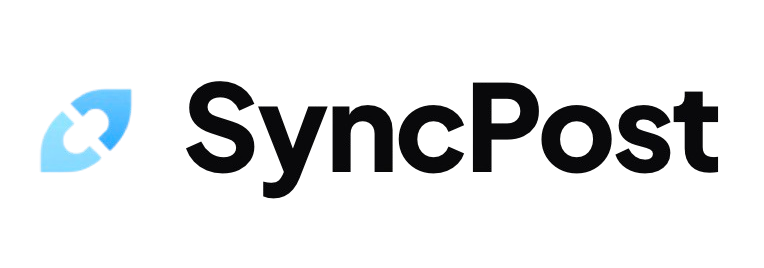
Why Content Distribution Matters
Managing your content across multiple social media accounts, websites, and email campaigns can feel like juggling too many balls at once. You spend hours copying, pasting, and reformatting the same content for different platforms, eating up time you could use to create new content or engage with your audience.
Your followers are scattered across Facebook, Instagram, LinkedIn, and other platforms, making it hard to keep your message consistent everywhere. When you post manually on each platform, small differences in timing and formatting can confuse your audience and reduce engagement. Plus, you risk missing peak posting times for different platforms, which means fewer people see your content.
Content distribution platforms can handle all these tasks automatically, saving you hours of work each week. These tools make sure your message stays consistent and reaches your audience at the right time, no matter which platform they prefer.
Platform Types Explained
When you're ready to share your content online, you'll encounter three main types of distribution platforms that can help you reach your audience. Social media management tools, cross-posting tools, and content syndication platforms each serve different purposes in getting your message out to the world.
Each platform type has its own special features that make it useful for specific content sharing needs. Social media management tools help you schedule and organize posts across multiple networks, while cross-posting tools like SyncPost focus on helping you share the same content between specific platforms efficiently. Content syndication platforms take a different approach by automatically distributing your content to a network of publishing partners.
Automation Benefits
Manual content distribution takes up precious hours of your day while leading to inconsistent posting times and engagement rates. When you're juggling multiple social media accounts and content types, you'll often miss the best times to reach your audience.
Content automation saves you hours each week by handling the routine tasks of publishing and tracking. You can schedule posts ahead of time across different platforms, ensuring your content reaches the right people at peak engagement times. The automated analytics tools track your content's performance, giving you clear insights into what works without manual data gathering.
By letting automation handle the distribution work, you can spend more time creating engaging content that connects with your audience. This shift from managing posting schedules to focusing on content creation helps you produce better quality material that truly resonates with your followers.

Platform Selection Guide
When choosing a content distribution platform, you need to first check where your target audience spends their time, as this directly impacts your content's reach and engagement. Your content type, whether it's videos, articles, or podcasts, must be fully supported by the platform's native features to ensure optimal presentation. The platform should also offer good integration options with your existing tools and workflows to help you manage content efficiently.
Many content creators make the mistake of jumping onto trending platforms without confirming if their target audience is actually active there. You might also waste resources by picking platforms that require technical expertise or time commitments you can't maintain.
To find the right platform match, list your must-have features and compare them against each platform's capabilities. Take time to test the platforms with sample content before making your final choice, as this helps you understand the practical aspects of using the platform daily.
Content Optimization Tips
Pushing the same content across all platforms won't get you the results you want. Your audience expects different things from Facebook, LinkedIn, and TikTok, so using identical content everywhere means you're missing opportunities to connect with them effectively.
Each platform needs its own approach to shine. Photos work better with carousel posts on Instagram, while LinkedIn users prefer detailed how-to posts, and TikTok audiences respond best to short, snappy videos. Your Twitter posts should be short and use simple language, making them easy to read and share.
Look at your content performance data regularly to see what works best on each platform. You can then adjust your approach based on engagement rates, click-throughs, and audience feedback to make your content work harder for you.
Analytics and Tracking
Measuring how well your content performs across different platforms helps you understand what resonates with your audience. Your content distribution efforts directly impact your business results, making tracking essential for proving the value of your work.
Each platform offers unique metrics that matter most for your goals. On social media, you'll want to track engagement rates, shares, and audience growth, while website content success depends on page views, time on page, and conversion rates. Email distribution typically focuses on open rates, click-through rates, and subscriber growth.
You can use these analytics to spot trends and adjust your content strategy quickly. We recommend setting up a simple weekly check-in routine to review your numbers and make small improvements based on what the data tells you.
Cost vs ROI Analysis
Thinking of content distribution platforms as just another expense misses their true value in today's marketing environment. These platforms are actually cost-cutting tools that help you work smarter and reach more people with less effort.
Manual content distribution can eat up 15-20 hours of your week just copying, pasting, and scheduling posts across different channels. Using an automated solution cuts this time down to about 2 hours per week, letting your team focus on creating better content instead of pushing buttons. The money you spend on a distribution platform is much less than the cost of paying someone to handle these tasks manually.
You can track the success of your distribution platform through metrics like increased engagement rates, click-through rates, and overall reach. The hours saved each week add up to hundreds of hours per year, giving you a clear picture of the platform's value for your business.

Integration Strategies
Your content distribution can work better when you connect your favorite tools and platforms together. Using APIs and ready-made connectors helps you post content across multiple channels without switching between different apps. Your team saves time by setting up automated workflows that move content from creation to publication with minimal manual work.
Many teams struggle with getting their tools to work together because of incompatible file formats and different platform requirements. You can solve these issues by using file conversion tools and creating clear guidelines for content formatting before distribution.
Your brand voice needs to stay consistent even when you share content across different platforms. You can maintain this consistency by creating simple checklists that cover your brand's tone, style, and visual elements for each platform you use.
Future Distribution Trends
Content sharing platforms are adding smart features that can automatically pick the best time to post and suggest ideal audience segments for your content. AI tools now help with scheduling posts across different social media channels and can even predict which pieces of content will perform best with specific audiences.
These new tools mean you can spend less time on manual tasks and more time creating great content. You'll have better data about what works, making it easier to plan future content that your audience wants. Your content can reach more of the right people since the platforms will show it to users who are most likely to engage with it.
To prepare for these changes, start by testing one or two AI-powered distribution tools to see which features actually help your workflow. Getting comfortable with these tools now will help you stay ahead as they become standard in content creation and distribution.
Common Questions Answered
How many platforms should I distribute to? Start with 2-3 platforms where your target audience spends the most time and master those first. You can expand to more platforms once you have a good handle on your current ones and have the resources to maintain quality across all channels.
What if my content performs differently across platforms? It's normal and expected for content to perform differently on various platforms since each has its unique audience and format preferences. Use these performance differences to learn what works best on each platform and adjust your content accordingly.
How do I maintain authentic engagement while automating distribution? Focus on scheduling your posts at optimal times while still personally responding to comments and messages from your audience. Set aside specific times each day to interact with your followers, even if your content posting is automated.
What security concerns should I consider? Always use strong, unique passwords and enable two-factor authentication for all your social media and distribution tool accounts. Regular security audits of your connected apps and third-party tools will help protect your content and audience data.
How often should I review and adjust my distribution strategy? Check your content performance metrics weekly to spot quick wins and make small adjustments to your posting schedule or content mix. Do a deeper review every three months to analyze trends and make larger strategic changes based on what the data tells you.
